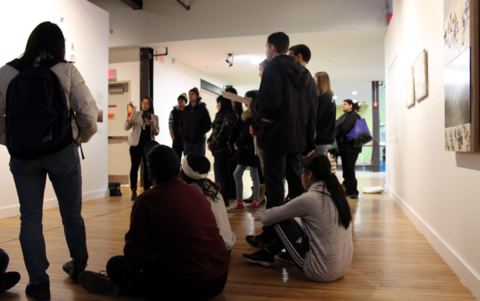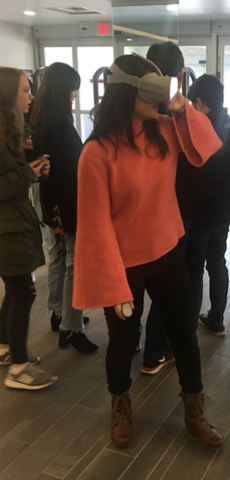Classes focus on practice-based learning. Instead of listening to a lecture and trying to capture notes, you’ll be immersed in activities and exercises that require communication, problem solving, and the kinds of skills necessary for demonstrating comprehension and effective decision-making. Imagine a classroom where you and your classmates work together to respond to a challenge posed by the instructor. This is how you'll experience ARTS 130 and ARTS 140.

Sohelia Esfahani's "So, Why is this Art?" Arts 130 students touring the KW Art Gallery and THEMUSEUM
Arts First classes are dynamic, discussion-based experiences that give you the chance to do a lot of writing and speaking. At the end of each course, you will have written about 15 pages of text that you have revised and peer-reviewed over a series of two or three assignments that build on each other. You can also expect to give presentations — these should be well-practiced, but not read or memorized.
Throughout Arts First courses, you will get regular feedback on your work from your instructor as well as from your peers through collaborative in-class exercises and assignments.
Learning outcomes for Arts 130
As an ARTS 130 student, you will:
- Understand your own diverse experiences, strengths, and goals as a communicator.
- Examine your views and perspectives and, through the practice of interpersonal communication, develop a deeper awareness of your role in the communication process.
- Look critically at context, audience, and genre and use that information to be more persuasive in your communications.
- Collaborate with your classmates and provide, incorporate, and reflect on feedback.
- Use communication to consider your own ideas and the ideas of others.
- Identify and work with different technologies that will help you communicate effectively.
Learning outcomes for ARTS 140
As an ARTS 140 student, you will:
- Access information and practice navigating library resources, including indexes and databases.
- Recognize, define, and reflect on the meaning of quantitative and qualitative data.
- Practice writing and speaking through communication assignments that will build your skills and confidence.
- Collaborate with your classmates and provide, incorporate, and reflect on feedback.
- Demonstrate an ability to reflect on how information, analysis, and communication lead to knowledge.
- Assess, examine, and evaluate the uses of information, including distinguishing between facts and values.

Paul Cegys's "Virtual Theatre" Arts 130 students experience virtual reality